Book review: 101 Myths of the Bible
by Gary Greenberg
★★★★★
This book wasn’t quite what I expected when I bought it, but I nevertheless enjoyed reading it. In my opinion, you won’t read conclusive evidence that the stories are myths; what you’ll read are possible explanations for 101 of the Bible’s legends, for scholarship has hardly settled upon many of the conclusions Greenberg draws. But he does make you think, and that’s the purpose of my writing as well. An occasional idea for my daily blog post originates from this book; yesterday’s post combines two such ideas from Greenberg.
Greenberg’s specialty may be Egyptian mythology, because in many of the Bible’s stories, he finds Egyptian roots. This is not a new line of thought; others have proposed that Christianity, at its core, derives from even more ancient Egyptian beliefs. Perhaps this can be explained by Israel being a breakaway nation from Egypt—Moses led the children of Israel out of slavery there. Some examples may be helpful.
The Myth: God planted a tree of life and a tree of knowledge. The Reality: These two special trees symbolically represent the Egyptian deities Shu and Tefnut.
The Myth: God formed Adam from the dust of the earth. The Reality: The biblical editors confused the birth of Atum in Egyptian mythology with the birth of the first human.
The Myth: Jacob wrestled with a stranger. The Reality: The wrestling story reflects the daily struggle between Egyptian figures Horus and Set.
For each of the 101 “myths,” Greenberg provides two or three pages of explanation. The result is a fascinating peek below the surface of the Bible’s stories, making them even more interesting than you had imagined!

Book review: The Year of Living Biblically
by A. J. Jacobs
★★★★
Read any A. J. Jacobs before? This is more of the same serious humor he’s known for, this time on a topic dear to me: my Bible.
Jacobs was raised in a secular family, but decided one day to dive into the world of the Bible. What better spiritual journey could one imagine? Determined to obey every dictate of the Bible for an entire year, he vowed to follow not only the Ten Commandments, but even the less publicized rules. Love your neighbor. Be fruitful and multiply. But not both at the same time.
Some rules are easier than others. The Law says to tithe ten percent of your fruit, but nobody on the street wanted to take two slices of his orange. Nor was it easy to stone adulterers as the law commanded. Jacobs carried pebbles in his pocket for this very purpose, and one day the unthinkable happened: he met an adulterer. Problem was, the guy didn’t take kindly to being beaned with a pebble. It was a stoning that Jacobs nearly didn’t survive.
What do you wear when clothes made of mixed fibers are disallowed? What do you eat when only unleavened bread is kosher? How do you read the newspaper without bringing graven images into your home?
This was a year Jacobs was happy to see come to an end. Both funny and enlightening, you’ll learn more about your Bible from this book than in a year of Sunday school classes.

Book review: The Sins of Scripture
by John Shelby Spong
★★★★★
The subtitle of this book is Exposing the Bible’s Texts of Hate to Reveal the God of Love. I read this book a few years back, and the reason it came to mind today is because I am feeling overwhelmed by the aggressiveness of anti-Bible crusaders. Unquestionably, there are many passages in the Bible that are not only questionable theology, but downright appalling. Unquestionably, there are “Christians” today who pounce on these texts in order to promote discrimination or oppression. But the majority of Christians do not; the majority of Christians worship a God of love, and either spiritualize or completely discard those scriptures that reveal, not God’s will, but human weakness.
Can we really worship a God who murdered all the firstborn males in every Egyptian household? How about a God who stops the sun in the sky, providing more daylight so that Joshua can slaughter more of his enemies? Would the God you worship instruct Samuel to “Go and smite Amalek, and utterly destroy all that they have; do not spare them, but kill both man and woman, infant and suckling, ox and sheep, camel and ass”?
Is it ok to possess slaves, or sell your daughter into slavery? Should cursing or violating the Sabbath be cause for death? Is it right to stone disobedient children? Of course not, neither today or 2,500 years ago, and we know this.
How about the treatment of women as chattel? Encouragement of homophobia? Anti-Semitism? Spong guides us into a more liberal understanding of the Bible, pointing out the texts that exhibit human thinking, human fear, and comparing them to texts where the love of God shows through, and briefly touching on his vision of the Kingdom of God. It’s true that this book is one of the more negative of Spong’s works, but it sets us up for books yet to come.

Book review: How the Bible Came to Be
by John Barton
★★★★
John Barton spent 15 years studying the making of the Bible. This brief booklet (less than 100 pages) presents his findings. He first gives a short synopsis of each of the 66 books of the Bible, and then dives into probable authorship and dating. From there, he discusses how the books were selected and collected into scripture, including an interesting discussion of what was considered “scripture.” Finally, he explains how the two canons (Old Testament and New) were derived.
Barton is not going to tell you Paul wrote Hebrews or that Moses wrote the Torah. His purpose is not to present traditional, conservative teachings, but to bring you up to date on current Bible scholarship, and he writes in a manner that non-technical readers can comprehend. There is no unified understanding between scholars, and some of Barton’s views are his own, yet all in all I think he does a great job of introducing the formation of the Bible.
In my opinion, the book’s greatest value is for conservative Christians! If you don’t want to spend weeks learning about biblical scholarship, but need to be aware of the thinking and conclusions of critical scholarship, this is a perfect overview. Two hours will give you the basics.

Book review: Carta’s Illustrated Encyclopedia of the Holy Temple in Jerusalem
by Israel Ariel and Chaim Richman
★★★★★
Rabbis Ariel and Richman represent the Temple Institute, founded in 1988 to “rekindle the flame of the Holy Temple in the hearts of mankind.” It houses a team of researchers of Temple-related subjects. This oversized book is a product of the Institute.
This is a reverent and stunningly beautiful coffee-table book, containing hundreds of pictures, richly annotated. I bought this while in Jerusalem, and I absolutely love it; no other book I’ve seen so evinces such a feeling of the Temple’s original splendor and atmosphere.
The subject is, of course, Herod’s Temple, the Temple visited by Jesus. Christians seem to have mixed feelings about the Temple and its rituals, but if you want to view its place in history from a Jewish viewpoint—including the sacred stories that preceded its building upon holy land—this book is a treasure. You’ll learn about Temple services, the sacred artifacts, the roles of both men and women, and the special ceremonies of the feast days of Rosh Hashanah, Yom Kipper, Sukkot, the Passover, and Shavuot. (For the uninitiated, these are the festivals of the New Year, the Day of Atonement, the Feast of Booths/Tabernacles, the Passover, and the Feast of Weeks.)

Book review: Dawn Behind the Dawn
by Geoffrey Ashe
★★★
SPOILER ALERT
Seven. Seven, 7, seven. Most of the book is taken up with this mystical number, a number with little practicality to explain its lofty status. Our seven-day week, for example, derives directly from the Hebrew reverence for this number, but it’s clumsy; seven divides neatly into neither a 30-day month nor a 365-day year. Why not a five-day week?
As a scholar of Revelation, I’m certainly familiar with the number seven. Seven churches, seven seals, seven angels, seven trumpets, seven bowls of wrath, seven-headed dragons, and more. The number seven bleeds into the Gospel of John as well, with seven I AM’s and seven signs. But the mysticism of this number precedes Hebrew beliefs and is inexplicably common throughout several civilizations, dating back thousands of years.
The subtitle of Ashe’s book is “A Search for Earthly Paradise,” and while the analysis of the number seven is interesting, it isn’t worth half the book; it doesn’t bring us very close to paradise. More interesting is the author’s research into shamanism and the various myths of a northern mountain paradise, an exalted Eden.
In the end, uncovering an earthly paradise is revealed to be too lofty a goal; at best, the most the author uncovers is a distant memory of a golden age of female shamans, with implications about a cultural source or seedbed somewhere between Siberia and Mongolia, which may have been a sort of paradise of Goddess wisdom. By book’s end, even this has dissolved into a number of obscure theories about the origins of our myths and mystical numbers. I’m afraid paradise is forever lost, my friends.

Book review: The Bible With Sources Revealed
by Richard Elliott Friedman
★★★★
The first five books of the Bible are traditionally understood to have been written by Moses. In places, Jesus appears to confirm this. Most critical Bible scholars since the late 19th-century, however, have recognized at least four different contributors of the books of Moses:
A text known as J was composed during the period when the kingdoms of Israel and Judah were divided. J was written by an author living in the southern kingdom. It’s known as J because it refers to God by the name of YHWH (Jahwe in German).
A second text known as E was composed in the same period, by a priest living in the northern kingdom. It’s called E because it refers to God as Elohim.
A third text is known as P because it concerns the priesthood. There remains some argument about when it was composed; Friedman suggests shortly after J and E were combined into one text.
The final source is known as D because it comprises most of the book of Deuteronomy. It’s part of a longer work, including Joshua, Judges, 1 and 2 Samuel, and 1 and 2 Kings. It contains sources that date as early as J and E, but it was not compiled into one source until the reign of King Josiah, circa 622 BC.
All of these sources were spliced together by a redactor to create the Torah (the first five books of the Bible). Friedman discusses the evidence for this theory (called the Documentary Hypothesis), and then travels verse by verse through the Torah, color-coding the source and footnoting the setting. You’ll recognize two distinct creation stories in the Bible and two flood stories, and conflicting accounts within the Bible will suddenly make more sense, as the source and motive of the writings are revealed.
It’s best used as a reference book—I certainly haven’t read it straight through—but it’s a book I refer to often.

Book review: Socrates Meets Jesus
by Peter Kreeft
★★★★
If we were to revive Socrates, what would he think of today’s world?
This is a light-hearted—dare I say “cute” without offending Kreeft—conversation with the most famous of all philosophers. Socrates, who lived long before Jesus came on the scene, awakens in the 21st century and enrolls in a divinity school. In typical Socratic pursuit, he aims at uncovering the truth about the Bible and this man, Jesus, who made such a profound impact on the world. Jesus, he learns, was God in the flesh. Not a God, but the God. Remarkable! Who could ever believe in a “one and only” God?
Socrates discusses Jesus with fellow students Bertha Broadmind, Tomas Keptic, and Molly Mooney, and soon takes on the professors themselves, leaving them in a bewildered state of confusion about everything they thought they understood. By the book’s end, Socrates takes on the big question—the resurrection—and comes to a startling conclusion.
An enjoyable read!

Book review: The Ancestor’s Tale
by Richard Dawkins
★★★★★
While I read different genres, I only review books with a religious content. So, if I may be excused for one of my “liberal Christian rants,” let me say this: It’s a sad day when a book about evolution earns a spot on the shelves of a religion blog. It simply astounds me that half of all Americans still do not believe in evolution. The evidence is so overwhelmingly against a young earth that if Christianity is going to survive, it must pull its head out of the sand and reinterpret the Bible’s creation story (anything but a literal interpretation!) before it alienates the coming generation, who will simply know better.
This book will help. I’m not a fan of Dawkins’ anti-religion tirades, but when he sticks to his evolutionary biology, his writing is a pure delight. It’s insightful, highly intelligent, and witty. The subtitle of the book is A Pilgrimage to the Dawn of Evolution, and it’s a long journey backward in time from present-day humans to the beginnings of life four million years ago.
You’ll meet Cro-Magnon man, the Neanderthals, chimpanzees and gorillas, monkeys, rodents and rabbits, reptiles, sharks, flatworms, sponges, fungi, plants, and far more, each with their own unique role and story to tell.
Scientific understanding is, and ever will be, in a state of transition. As we learn, we shape our theories to fit the facts. It’s an exploration that never ends, an exciting quest for truth that Dawkins excels in sharing. He stops often along this journey back in time to introduce interesting life forms and their evolutionary sidebars, evoking wonder and appreciation for the real creation story that far exceeds any ancient tales. It’s such a treat that I’m almost envious of long-time creationists who can, by opening their minds and turning the cover of this book, open themselves up to a new world of wonder.
You will see the world in a different way after reading this.

Book review: Revelation: The Way it Happened
by Lee Harmon
★★★★★
This short review of my latest book is by Midwest Book Review. Established in 1976, Midwest Book Review produces several review publications per month, with a goal of encouraging small press and increasing literacy. It selects about 450 books to review out of the 1,500 submitted each month. The organization has a focus on serving community and academic library organizations located in California, Wisconsin, and the upper Midwest.
*********
A well researched and thoughtful read that definitely should not be overlooked.
The book of Revelation causes a rift with some Biblical scholars. “Revelation: The Way it Happened” is a novel on the writings of the John of Revelation, writing in the first century AD, looking to provide insight into the lives of the earliest Christians and what mattered to them in a world that shunned them and the principles that Christians most held dear. Drawing on history and Revelation alike, “Revelation” is a well researched and thoughtful read that definitely should not be overlooked.

Book review: The Historical Jesus: Five Views
Edited by James K. Beilby and Paul Rhodes Eddy
★★★★★
Five noted scholars discuss what we can determine about the historical Jesus: Robert Price, Dominic Crossan, Luke Timothy Johnson, James Dunn, and Darrell Bock. It’s a wide range, from confirmed believers to one who argues that no historical Jesus existed at all.
Jesus scholarship continues to evolve, but it seems to me to be spiraling the target instead of zeroing in. For example, virtually all scholars now accept that Jesus was recognized by his contemporaries as a miracle worker and healer, while less trust is being placed in the “embarrassment criteria” that has prompted scholars to trust the Gospel of Mark above others.
The book is presented in debate style, and the contributors pull no punches. Each presents a short argument, maybe 30 pages long, and then each of the other four write a few pages of critique in response.
Like any good debate, it may leave you more confused than when you began, but if I must choose a “winner,” this time I pick the conservatives. (Please understand that, by “conservative,” I mean relatively so; Christianity within reason—rejection of critical scholarship is not a prerequisite to believing.) I’ve gained a new respect for Bock, and I was especially impressed by Dunn’s discussion of oral tradition. Dunn argues that it’s reasonable, once we capture in our minds the faith of the first followers of Jesus, to trace the Gospel writings back through normal oral transmission to Jesus himself, and suggests that the Gospels are not taken seriously enough by Jesus scholars. It is those who were so greatly impressed by Jesus that can give us the best glimpse of why they were impressed. He closes with this provocative conclusion: “Those who still experience the Jesus tradition as living tradition may well be best placed to appreciate the initial stages of the traditioning process, that it is the ear of faith which is likely to hear the Gospels most effectively, and that the living quality of the Jesus tradition is most likely to be experienced by those who in effect sit with these early assemblies in sharing their memories of Jesus and in seeking to live by them.”

Book review: The Beast of Revelation
by Kenneth L. Gentry Jr.
★★★★★
I believe this is the book (I read the first version, before its reprint in 2002) that first introduced me to the preterist way of interpreting Revelation. This interpretation posits that most, if not all, of Revelation’s promises were fulfilled in the first century. I was utterly fascinated, and this book still holds a special place in my library.
The book is a condensation of a much larger work by Gentry: Before Jerusalem Fell. It’s broken into two parts. The first half is a description of Nero Caesar and how he fits the beast of Revelation to a T. The second half is an analysis of the dating of Revelation.
Gentry concludes Revelation was written before the great war of 70 A.D., when Jerusalem was destroyed and the Temple leveled by the Romans. I came to disagree with him, as you may know from my own book. Gentry describes his approach: “Holding to an unshakable conviction regarding Scripture’s divine inspiration, I also afford its inherent authority, infallibility, and inerrancy.” Well, there you go, of course a person who studies the first-century message of Revelation, and begins with the assumption that it prophesies the events it describes, would have to conclude that it was written beforehand.
Nevertheless, Gentry is an interesting writer with a fascinating message. That adds up to a very readable book, and earns it five stars.
Gentry, himself, remains for me an enigma who refuses contact. It’s possible I’ve offended him by contradicting his conclusions in my own book, but for whatever the reason, he won’t entertain, for debate or even discussion, theories that contradict his own interpretation. Because he pursues his scholarship in a bubble, his writings must be taken with a grain of salt, yet his perspective definitely deserves attention. This is a book I’m certain will make you think.

Book review: The Days of Vengeance
by David Chilton
★★★★★
For those of you that read my review of Alan Bondar’s book (http://www.dubiousdisciple.com/2011/02/book-review-reading-the-bible-through-new-covenant-eyes.html) and yearned for more, here’s a book you absolutely must read. Chilton (1951-1997) is no stranger to preterist scholarship and first-century eschatology. I suspect this book sits on the shelf of every preterist researcher. And it should.
It’s not a quick read; over 700 pages. A comprehensive exposition, going verse by verse through Revelation, showing its relevance to first-century happenings. It is Chilton who quipped, “Not once did [John] imply that his book was written with the twentieth century in mind, and that Christians would be wasting their time attempting to decipher it until the Scofield Reference Bible would become a best-selling novel.”
Some of the analysis goes a bit deep; one of Chilton’s most important contributions is a long, convincing explanation of how rabbinic numerology would have recognized the number 666 already as the mark of both a king and a kingdom in the Dragon’s image. They also identified, from Daniel, the Roman Empire as the fourth and final kingdom before the end times. Then, lo and behold, along comes a Roman emperor (Nero Caesar) matching this very number!
Do you really want to understand why first-century Christians were so completely convinced of Christ’s impending return? Then this book is a must-read.

Book review: The Resurrection of Jesus: John Dominic Crossan and N.T. Wright in Dialogue
Edited by Robert B. Stewart
★★★
When this book first appeared, I purchased it with great anticipation. Crossan and Wright are respected and respectful scholars, both with a reputation for digging deeply. But they sit on opposite sides of the fence.
To set the stage, there is no mention of an empty tomb in Paul’s writings, and the earliest Christian tradition contains no description of the resurrection itself. By the time the Gospels were written, it would have been very hard to certify what the tomb had contained. Tombs in that period were not permanent places of burial but only temporary places where the body decayed, leaving the bones, which were then either pushed to the back of the tomb or collected in ossuaries. In other words, no evidence existed to prove or disprove the claim of bodily resurrection by the time the claims were committed to writing.
Did it happen? How?
Wright believes in the bodily resurrection of Jesus and the empty tomb. He puzzles, as a historian, why anyone would continue to belong to the Christian movement in the first century and regard Jesus as the Messiah, unless the stories were regarded as literally true. Crossan, on the other hand, understands the resurrection as a metaphor for Jesus’ continued presence in the church. Bodily resurrection, to him, means “the embodied life of Jesus,” which continues to be experienced by believers today.
Sound like an interesting discussion? The dialogue between the two lasts all of 18 pages, and is rather uninspiring. The rest of the book contains commentary by other authors, where at least we appear to get a real peek into the minds of Crossan and Wright.
Disappointing.

Book review: Reading the Bible Through New Covenant Eyes
by Alan Bondar
★★★★★
This is a very important book, and I beg all Christians to read it slowly. It might make you think differently, but there is nothing here to be afraid of, I promise.
I should confess up front that I asked for a review copy of Alan’s book because I have a deep interest in Christian eschatology (the study of the end times). I have written my own book about Revelation (http://www.thewayithappened.com/), and Alan and I both read the Bible more literally than most people. When the scripture says “soon,” we believe it means soon. When Jesus says “within this generation,” we believe Jesus meant his own generation. Yet, though we read the same words with the same literalness, we disagree—quite radically, I might add—about its message. Our two books are polar opposites. And here I am wholeheartedly endorsing Alan’s book. How can that be?
Question: Is the Bible the inerrant, inspired word of God? I personally don’t think of it that way. When I read the scriptures, I see multiple contradictions, differing opinions, human motives, outdated morals, historical inaccuracies, and blatant evangelizing. This is not to say I don’t consider the Bible the most influential and miraculous piece of literature in the history of the world; I do, and I’m greatly inspired by it. I just don’t read it as inerrant scripture.
My approach to interpreting scripture is sometimes called the historical-critical method. This method seeks to uncover the meaning and setting of each passage without resorting to supernatural suppositions. For example, Revelation refers directly to several events that happened during the Jewish war of 66-70 A.D. So, quite naturally, I conclude it must have been written after the war. How else could its author write about what happened?
There is a second way to read the Bible. If read through the eyes of a believer, one who finds that the Bible is prophetic and inerrant, then the logical conclusion is that Revelation could have only been written before the events it describes, since it seems to promote itself as prophecy.
Enter Alan Bondar’s book, Reading the Bible Through New Covenant Eyes. Another equally descriptive title may be Reading the Bible Through Believer’s Eyes. Bondar is a believing Christian who writes under the assumption that the Bible is both holy and inspired—and entirely written before the destruction of the Temple in 70 A.D. Now, I don’t often take sides like this in my book reviews, but I consider myself a scholar of Revelation and first-century eschatology, and here is my conclusion: If Bondar is right about the Bible’s inerrancy and traditional authorship (a big if, but I know many of you share this belief with him) then there is only one way to interpret the Bible as a whole, and Bondar has nailed it. His interpretation remains true to the spirit of urgency throughout the New Testament. Take this to the bank from an impartial judge (yeah, that’s me, the agnostic Christian): If the Bible is everywhere consistent, Bondar’s careful research has uncovered the most logical and contextual way to read it. Deep study of the Bible has turned him into a full preterist: a person who believes God’s promise of a new age, as described in books like Revelation, was fully realized in the first century.
Preterism is a branch of Christianity that believes most of the prophecies and covenantal promises have been fulfilled. Armageddon is over. Full Preterism, Bondar style, carries this to extremes: It’s all been fulfilled. Christ has already come back, the earth is not going to be destroyed, the general resurrection has happened.
Let’s get right to the dirt: Jesus promised he was coming back immediately. Futurists point out that Jesus never came back, and conclude he must not have really meant “immediately.” Full Preterists point out that Jesus clearly said “immediately,” many times in many ways, and conclude Jesus must have somehow already come back. Oh, and irritants like me point out that the writers of the New Testament could have been mistaken in their beliefs, but let’s ignore the irritants for now.
So, how and when did Jesus come back? What about the general resurrection? Has death been abolished as promised? Did the final judgment occur? These are all questions that Bondar answers with simplicity, consistent with the teachings of the Bible. Well, with one exception: I confess Alan Bondar’s explanation of the millennium, the thousand year reign of Christ, seems weak to me.
I was disappointed that this book does not discuss the external evidence of Preterism. That is, the events of 66-70 A.D. that map directly to the story in Revelation. But I’ve read several great Preterist books, and I’ll try to do a review on one or two in the near future. Besides, for Bondar to exhaustively argue his case would take a book twice the size of this one, and obscure its real value: that of bridging the misunderstanding of many Christians, that Preterism is some kind of wacky uprising to destroy one’s hope, and showing it to be just as “Christian” as orthodox beliefs.
Let me leave you with some advice: If you are content in your belief that the Bible is imperfect, read my book and don’t let Alan corrupt you. If you are a literal believer in the Bible, pick up Alan’s book and don’t touch mine with a ten foot pole. And if you are happy with your creedal, orthodox version of Christianity, burn both books and keep scanning the skies for Jesus to return on the clouds.

Book review: Jesus Christ: The Jesus of History, the Christ of Faith
by J. R. Porter
★★★★★
I have no idea how this book slipped through the cracks. I never heard of it until one day it appeared on the discount rack at Borders. With lots of colorful pictures and insightful sidebars, does it not look scholarly enough? Would that explain its obscurity?
This is more than a beautiful book; it’s carefully researched and fun to read. Oh, that’s another sin, isn’t it? Scholarly books are supposed to be boring, reserved for the studious.
Here’s the deal: If you’ve ever wondered about all the hoopla surrounding the Historical Jesus, this is a highly recommended first book, taking you deep into the world of first-century Palestine. It’s respectful but not evangelical; the typical Christian will find it enlightening while the fundamentalist may not. In a simple example, Matthew and Luke provide long genealogies of Christ, that unfortunately contradict one another. Porter points out that such genealogical compilations were common, and were for political or religious reasons, never intended as a straightforward historical record. They are, in the biblical instance, artificial constructions with a theological aim, needing no harmonizing, and the contradiction between the two should not disturb Christians.
Let’s take another example. When Porter discusses the Massacre of the Innocents (King Herod’s slaughter of children when Jesus was born), he discusses how the story in Matthew is woven from various biblical themes, probably influenced by Jewish embellishments of the story of Abraham in the book of Genesis. Many scholars hold the view that Matthew has manufactured the entire story. But Porter doesn’t downplay the possibility that such a massacre did occur at the hands of Herod; it may be authentic, its victims simply not numerous enough to draw the attention of contemporary historians. Such brutal acts were not unheard of for the time.
This constant determination to present all sides of a discussion—in particular, his portrayal of both the Jesus of history and the Christ of faith—is not being wishy-washy. It’s merely good scholarship, and it makes you think.
Beautiful, quite readable, highly recommended.

Book review: The Unworthy Servant
by Bob Williston
★★★★
The Unworthy Servant is a fictional narrative of a young man who joins an obscure Christian “cultic” group. Bob Williston was raised in such a sect (sometimes called the 2x2s or the “Friends and Workers,” hereafter abbreviated F&Ws), and anyone who knows the author knows precisely the religious group which forms the inspiration for his writings, but this isn’t meant to be a story about only the F&W’s. Bob purposefully introduces idiomsand rituals that don’t derive from the F&Ws. For example, he writes about foot washing, which the F&W’s don’t practice; he speaks of “confessing” (the common F&W term is “professing”) and of attending “retreats” (F&W’s will call them “conventions.”) When I asked about this, Bob explained: “The reason I used some different language and some different practices was to make the book focus more on the dynamics and personalities in a cultic group, rather than have it appear to be simply a presentation of life among the 2x2s.”
But don’t be fooled: while Bob writes “generically” of such sects, his storyline and characters derive from an actual living, breathing religious movement. The F&W religion originated in the late 19th century, and maintains a worldwide nondenominational Christian fellowship of a few hundred thousand members that meet in homes and are directed by a homeless, travelling ministry. The group prefers to keep a low profile, and doesn’t have a legal organization or website to tell about it, but here is a website maintained by a prior member that can provide more information: http://www.tellingthetruth.info/home/
F&Ws will, of course, bristle at Bob’s use of the word “cult” as he describes the book, because this word can be misinterpreted in some very derogatory ways. I don’t want to put you in mind of another Heaven’s Gate or Waco, Texas. The F&W religion is benign by comparison, in my opinion only slightly more “cultish” than mainstream Christianity. Its members are satisfied, happy members of society. Nevertheless, Bob’s story will carry you deep inside a world that is very foreign to most Christians.
Meet Aaron Finkelstein, a young man who finds his spiritual emptiness met by a Christian group called “The Way.” Enamored of its simplicity and friendliness, he offers to become a “servant” (a minister, or, in F&W terms, a “worker”). As instructed, he signs over his life savings to the group so that he can become homeless and penniless. Thus begins a journey into a world of critical fundamentalism, aggressive exclusivity, under-the-surface legalism, subtle extortion and irrational over-admiration for group leaders. (Note to members of such groups: Yes, whether you feel it’s deserved or not, many outsiders and former members really do see your group in exactly these terms. The lack of financial accountability does not help.)
Ninety percent of the book is dialogue, which can be a challenge for an author. At times this style makes the book appear unimaginative and preachy (you can only do so much with “he said, she said”) but at other times makes it insightful and hard to put down. For me, perhaps because of my religious background, it was a page-turner. I particularly recommend it for anyone with connections to similar religious groups.

Book review: The Irresistible Revolution
by Shane Claiborne
★★★★
Welcome to the world of radical Christian Shane Claiborne, where compassion and brotherly love trump all else. It’s a world of protest rallies, sleeping alongside the homeless, frequent jail time, caring for others alongside Mother Teresa at Calcutta, and visits to leper colonies and wartime Iraq. Shane believes in works, and has written a book for a new generation of Christians who want to live their faith to the fullest. Church is no longer enough: Shane jokes that if someone had a heart attack on Sunday morning, the paramedics would have to take the pulse of half the congregation before they would find the dead person. A friend of his put it this way: “I gave up Christianity in order to follow Jesus.”
Thy kingdom come. Thy will be done on earth, as it is in heaven. For Shane, these are no longer repetitious words, atonally muttered in anticipation of a future era. They are today’s conviction.
At this point in my book review, I’m supposed to gleefully endorse Shane’s revolutionary Christianity. Actually, the book was a bit troubling for me, more so as I saw shades of Jesus himself in its radical suggestions, for I cannot lend my support to some of Shane’s teachings, and others, though just as unarguably Christ-like, I find myself unwilling to embrace. I find, like Shane, that Jesus was a radical activist, a role I am uncomfortable with. I agree with Shane that Jesus taught we should literally sell all and follow his humanitarian lead, and the only weak defense I can muster is to point out that that was 2,000 years ago. Shane’s energy (fueled by a deep belief in the “Jesus of faith” and the Bible’s inerrancy that I cannot share) left me drained and discouraged. I’d like my Jesus served up passive and agreeable, please, even when I know it ain’t so.

Book review: In the Beginning
by Karen Armstrong
★★★★★
This is not a new book, but it’s one I enjoyed and want to share. It’s short, especially so when half the book is a reprint of the text of Genesis, which, surely, no one reads.
This is the story of the Bible’s first book, raw and unchurched. Karen introduces us one by one to the characters and their stories, making no effort to turn them into saints, for they are nothing like the impossibly and depressingly flawless characters we met in Sunday School. Throughout, the authors of Genesis remind us that we can expect no clear-cut answers. We wrestle with the text, measuring its inconsistent doctrines and contradictory lessons, as we struggle to grasp the character of God. How can God be omnipotent, but powerless to control his creation? How can God be benevolent but a killer; wise but arbitrary; just but partial and unfair; omniscient but ignorant of human yearning?
Let me tell one story to set the tone of the book.
Jacob and Esau were twin brothers destined to conflict from the moment they emerged from the womb; Esau, first, to claim the coveted birthright, but not for Jacob’s lack of trying, who followed with his hand grasping his brother’s heel. As adults, the day came when the two would meet, and Jacob feared the meeting, for he had stolen his brother’s birthright through deception.
Jacob didn’t sleep the night before. Instead, says the Bible, he wrestled all night with a stranger, and became aware only at the end of the match that he had been fighting with God. Jacob brushed with the divine, and no two people experience God the same way. Was it real, or was it a dream? Psychologists speak of the “dream work” that we all accomplish at night at some profound level of our being, which enables us to look at issues that our conscious, daytime self finds impossible to face. Perhaps in some deep reach of his memory, Jacob recalled his wrestling match with Esau in the womb, as he internally prepared for his meeting with his brother in the morning.
Transformed and enlightened, Jacob set off at daybreak to meet his brother face to face.

Book review: The Path of the Blue Raven
by Mark Townsend
★★★★
This is a fascinating, brutally honest peek into the life of a Vicar (Church of England) who first found himself estranged from his priesthood, and then found God. Disillusioned with institutionalized religion, and by circumstance dissolved of his duties as a priest, Mark Townsend became free to pursue God into the world of nature-based spirituality.
Townsend now finds organized religion a barrier to the divine, not a door. Townsend hasn’t rejected Jesus; he still finds the person of Jesus “intensely exciting” and continues to embrace the Christ spirit, but in a more down-to-earth way. He quotes Richard Rohr to say, “One of the most successful ways Christians have avoided doing what Jesus said was to simply worship him. It’s easier to bow down and shout constant hallelujahs than to get our hands dirty by following him out into the world of brokenness and mess.”
In a broken and messy world, Townsend now finds a new way—a pagan way—of interpreting the scripture. The story of Jesus, he explains, merely makes true what already is. The Incarnation? We’re all already filled with divinity. The sacraments? We’re all in some way the body and blood of God (humans filled with deity).
Townsend never fit the mold of a traditional priest in the first place; his life-long practice as a magician (he is a “conjurer”), his frequent bar visits, his occasional colorful language, his determination to respect the feelings and beliefs of others, these things hardly endeared him to strict Christians. Townsend is imperfect and genuine, a person we can identify with. He knows his magic isn’t real, has never pretended it is, but he finds in it a world of enchantment able to awaken us to an appreciation of greater magic, greater enchantment. That’s the subtitle of his book: From Religion to Re-Enchantment. Townsend invites us to live with him a fully authentic life, whatever the cost.
Although foreign to my own version of Christianity, I found this journey both enjoyable and intriguing.



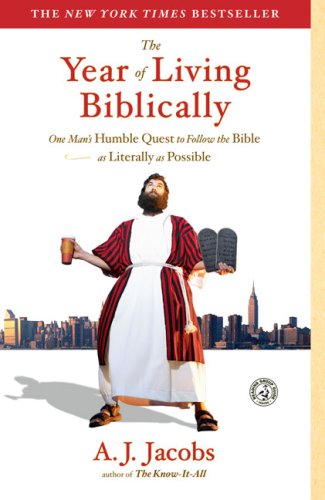

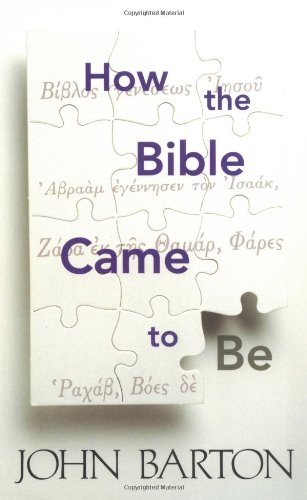

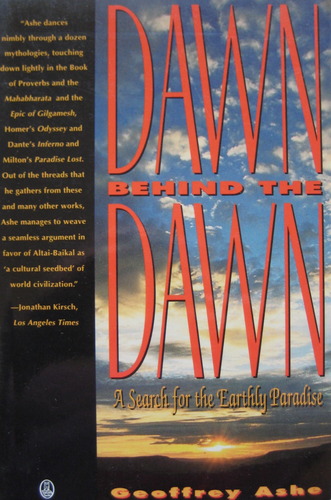
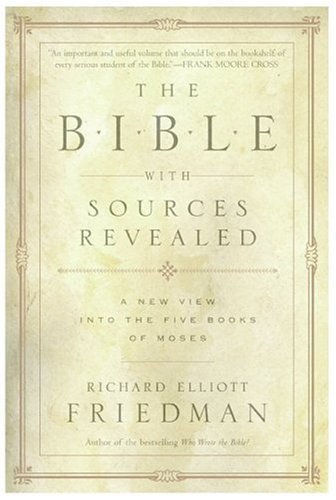
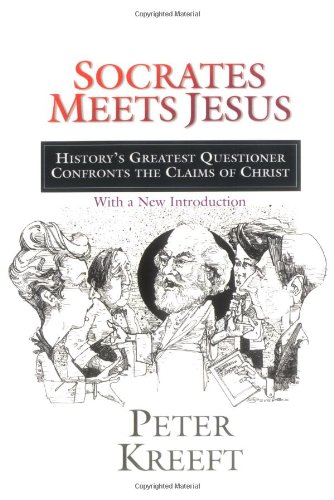

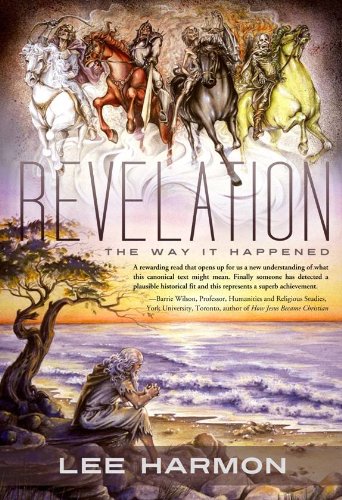
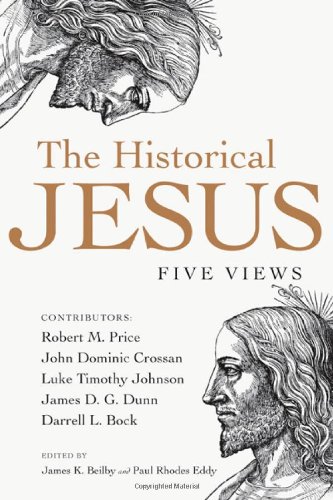
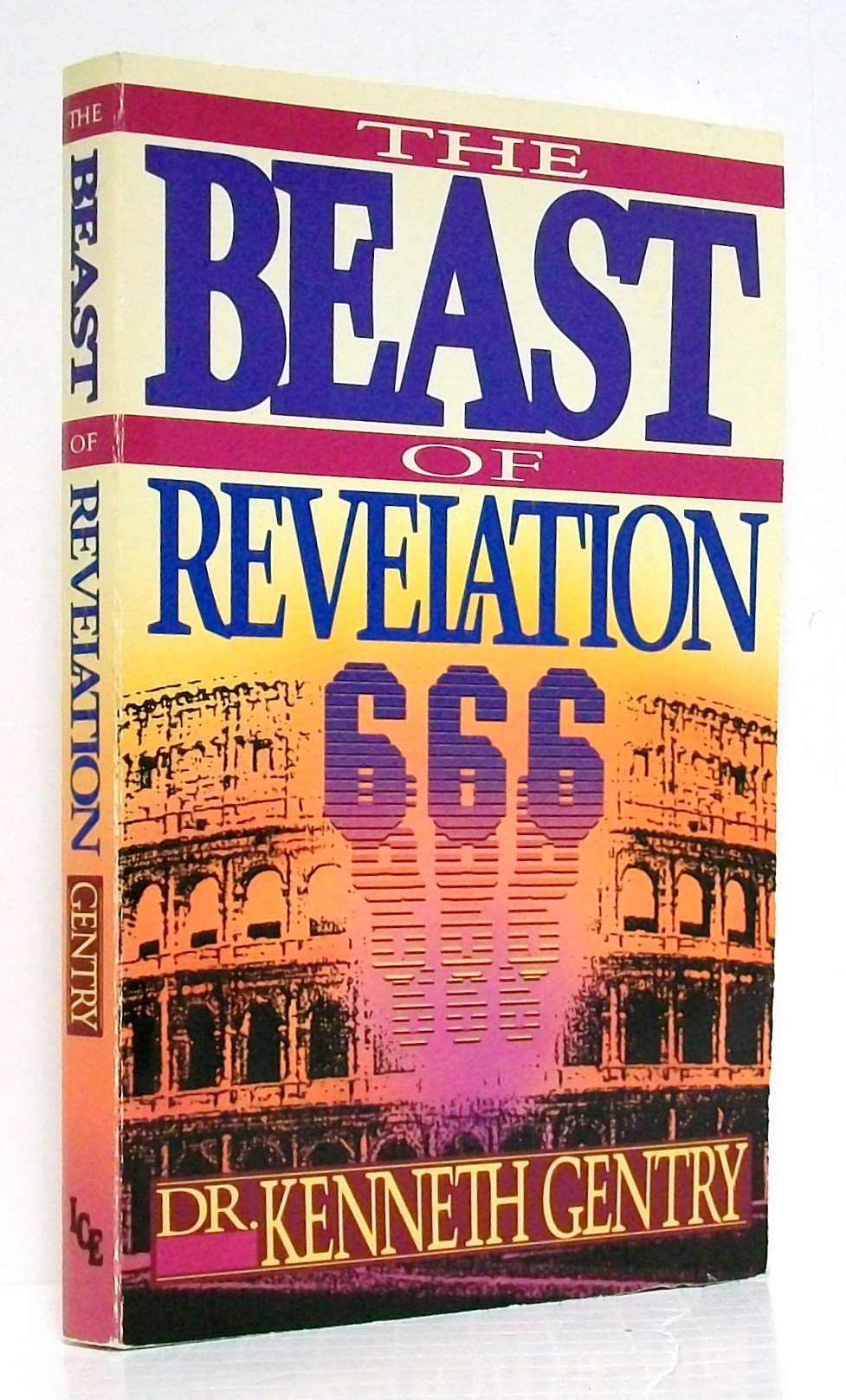
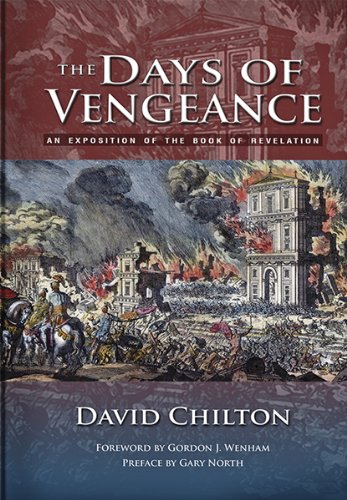
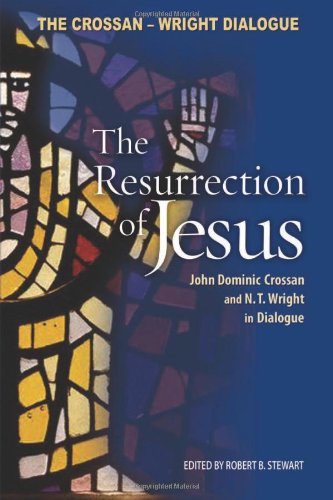
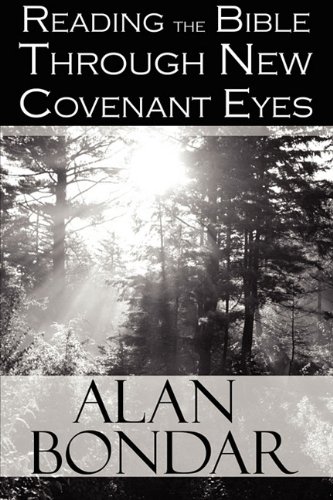



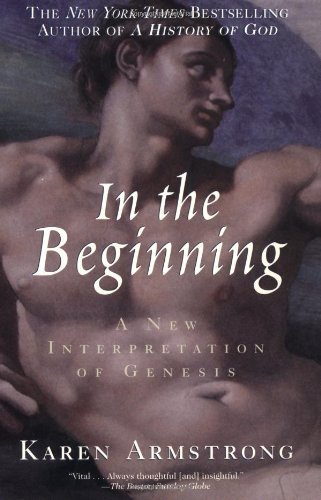
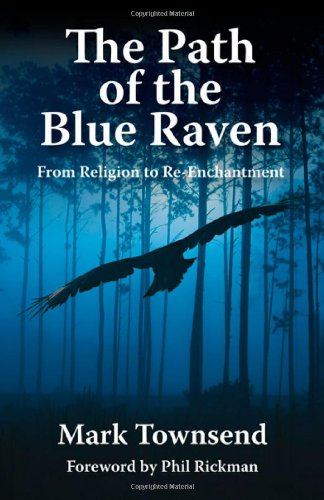









 354 Circles
354 Circles
 603 Goodreads Friends & Fans
603 Goodreads Friends & Fans

 Hello! I'm an author, historical Jesus scholar, book reviewer, and liberal Christian, which means I appreciate and attempt to exercise the humanitarian teachings of Jesus without getting hung up on any particular supernatural or religious beliefs.
The Bible is a magnificent book that has inspired and spiritually fed generations for thousands of years, and each new century seems to bring a deeper understanding of life’s purpose. This is true of not only Christianity; through the years, our age-old religions are slowly transforming from superstitious rituals into humanitarian philosophies. In short, we are growing up, and I am thrilled to be riding the wave.
I avidly read all thought-provoking religion titles. New authors: I'd love to read and review your book!
Hello! I'm an author, historical Jesus scholar, book reviewer, and liberal Christian, which means I appreciate and attempt to exercise the humanitarian teachings of Jesus without getting hung up on any particular supernatural or religious beliefs.
The Bible is a magnificent book that has inspired and spiritually fed generations for thousands of years, and each new century seems to bring a deeper understanding of life’s purpose. This is true of not only Christianity; through the years, our age-old religions are slowly transforming from superstitious rituals into humanitarian philosophies. In short, we are growing up, and I am thrilled to be riding the wave.
I avidly read all thought-provoking religion titles. New authors: I'd love to read and review your book!
 Hi! While Lee writes the articles and reviews the books, I edit, organize, and maintain the blog. The views expressed here are Lee's but I'm his biggest supporter! :-)
Hi! While Lee writes the articles and reviews the books, I edit, organize, and maintain the blog. The views expressed here are Lee's but I'm his biggest supporter! :-)
Connect With Me!